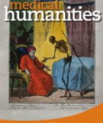Sound–meaning association biases evidenced across thousands of languages
Article by Morten H. Christiansen et al. published in PNAS

It is widely assumed that one of the fundamental properties of spoken language is the arbitrary relation between sound and meaning. Some exceptions in the form of nonarbitrary associations have been documented in linguistics, cognitive science, and anthropology, but these studies only involved small subsets of the 6,000+ languages spoken in the world today. By analyzing word lists covering nearly two-thirds of the world’s languages, we demonstrate that a considerable proportion of 100 basic vocabulary items carry strong associations with specific kinds of human speech sounds, occurring persistently across continents and linguistic lineages (linguistic families or isolates). Prominently among these relations, we find property words (“small” and i, “full” and p or b) and body part terms (“tongue” and l, “nose” and n). The areal and historical distribution of these associations suggests that they often emerge independently rather than being inherited or borrowed. Our results therefore have important implications for the language sciences, given that nonarbitrary associations have been proposed to play a critical role in the emergence of cross-modal mappings, the acquisition of language, and the evolution of our species’ unique communication system.
Read the article here
Danish media coverage of the project:
DR Viden: Mysterium: Verdens sprog ligner hinanden – men burde ikke gøre det
videnskab.dk: To tredjedele af verdens sprog bruger ens lyde i mange ord
Contact:
Professor Morten H. Christiansen
Professor of Child Language, Aarhus University, IMC
Professor, Department of Psychology, Cornell University, Ithaca, NY 14853
Co-Director, Cornell Cognitive Science Program
Senior Scientist, Haskins Laboratories
Email: christiansen@cornell.edu



